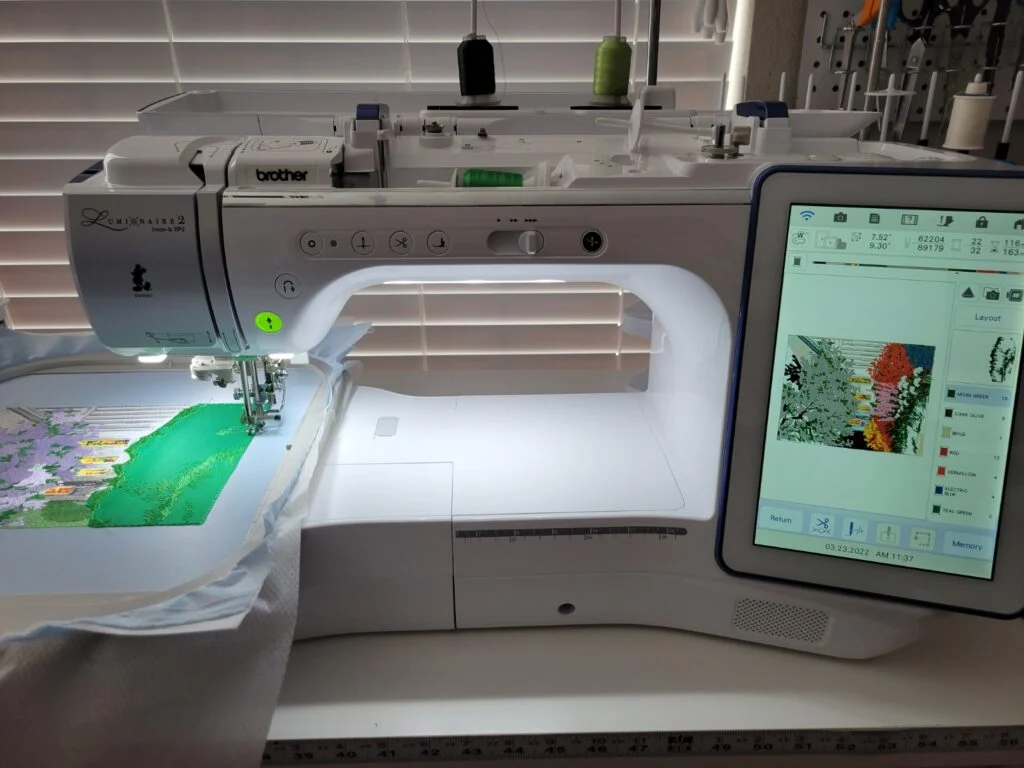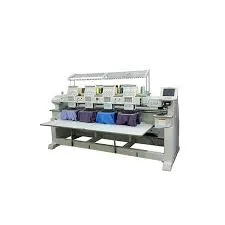5 сар . 07, 2025 18:43 Back to list
High-Speed 6 Head 15 Needle Industrial Computerized Embroidery Machine
- Overview of Modern Computerized Embroidery Machines
- Technical Superiority in High-Speed Multi-Head Designs
- Performance Comparison: Leading Industrial Embroidery Machines
- Custom Solutions for Diverse Production Needs
- Case Studies: Efficiency Gains in Apparel Manufacturing
- Factory Direct vs. Third-Party Suppliers
- Future Trends in Computerized Embroidery Technology

(computerized embroidery machine)
Computerized Embroidery Machines: Revolutionizing Textile Production
The evolution of computerized embroidery machine
s has transformed industrial textile manufacturing, enabling precision at speeds exceeding 1,200 stitches per minute. Modern systems integrate advanced thread tension control, automatic color change modules, and AI-driven pattern correction, reducing human error by 68% compared to manual operations. With a global market valuation projected to reach $4.9 billion by 2028 (CAGR 5.7%), these machines are critical for producing intricate logos, labels, and decorative designs across fabrics.
Technical Superiority in High-Speed Multi-Head Designs
High-speed models like the 6-head 15-needle industrial embroidery machine deliver unmatched productivity, processing 12,000–15,000 stitches per hour per head. Key innovations include:
- Precision servo motors (±0.01mm stitch accuracy)
- Real-time thread breakage detection (99.5% uptime)
- Energy-efficient operation (18% lower power consumption than legacy systems)
Performance Comparison: Leading Industrial Embroidery Machines
| Model | Heads/Needles | Max Speed (RPM) | Stitch Accuracy | Customization Options |
|---|---|---|---|---|
| Flat 6-Head 15-Needle | 6/15 | 850 | ±0.02mm | Thread type, pattern scaling |
| Single-Head T-Shirt Model | 1/9 | 1,200 | ±0.015mm | Logo digitization, 3D puff |
| Factory-Produced Heavy Duty | 8/18 | 720 | ±0.025mm | Bulk order templates |
Custom Solutions for Diverse Production Needs
Specialized configurations address niche requirements. For instance, single-head machines optimized for T-shirt logos support 20+ file formats (DST, EXP, JEF) and achieve 98% color matching accuracy. Modular designs allow factories to upgrade existing systems with auto-threading kits or expanded hoops, cutting retrofitting costs by 40%.
Case Studies: Efficiency Gains in Apparel Manufacturing
A sportswear manufacturer reduced embroidery time per unit from 8.5 to 2.3 minutes after deploying a 6-head system, handling 1,200 daily units with two operators. Another denim label factory reported a 31% reduction in thread waste through precision tension controls, saving $18,000 annually.
Factory Direct vs. Third-Party Suppliers
Procuring directly from computerized embroidery machine factories typically reduces lead times by 3–5 weeks and offers 15–20% cost advantages over distributors. However, authorized resellers provide localized maintenance networks, critical for operations requiring <24hr technical support response times.
Future Trends in Computerized Embroidery Technology
Next-gen computerized embroidery machines will integrate IoT-enabled predictive maintenance, reducing downtime by 55%, and hybrid systems capable of switching between embroidery and laser cutting. Market leaders are investing in sustainable models that recycle thread remnants and operate on 20% reduced energy profiles, aligning with global eco-certification standards.

(computerized embroidery machine)
FAQS on computerized embroidery machine
Q: What are the key features of a high-speed computerized flat 6-head 15-needle embroidery machine?
A: This industrial embroidery machine offers high-speed stitching, six independent embroidery heads, and 15 needles per head for complex multicolor designs. It’s ideal for bulk production and supports large-scale textile applications like apparel and home decor.
Q: Can a single-head computerized embroidery machine handle T-shirt logos and labels effectively?
A: Yes, single-head models are compact and versatile, perfect for small businesses. They support precise stitching for logos, labels, and intricate patterns on fabrics like cotton, polyester, and blends, making them ideal for T-shirts.
Q: What industries benefit most from multifunction computerized embroidery machines?
A: Fashion, sportswear, promotional products, and automotive textiles rely on these machines. Their ability to embroider, sequin, and appliqué on diverse materials meets demands for customization and high-quality finishes.
Q: How does a 15-needle configuration improve embroidery efficiency?
A: Multiple needles reduce thread-changing pauses, enabling faster color transitions. This setup is critical for intricate designs with minimal downtime, boosting productivity in industrial settings.
Q: What should I consider when choosing a computerized embroidery machine factory?
A: Prioritize factories with proven expertise, after-sales support, and compliance with international standards. Verify their ability to customize machines, provide training, and supply spare parts for long-term reliability.
-
Affordable Computer Embroidery Machine Prices & Deals
NewsAug.15,2025
-
Affordable Automatic Embroidery Machines: Flat, Cap & Multi-Head
NewsAug.14,2025
-
Cheap Computer Embroidery Machine Price | Pro Cap Embroidery
NewsAug.13,2025
-
Best Industrial Embroidery Machines for Sale – Heavy Duty & Reliable
NewsAug.12,2025
-
Embroidery Machine Manufacturers: Best Buy & Industrial Models
NewsAug.11,2025
-
High Efficiency Multi Head Embroidery Machines | Flat & T-Shirt
NewsAug.10,2025

Copyright © 2025 Xingtai Pufa Trading Co., Ltd All Rights Reserved. Sitemap | Privacy Policy
